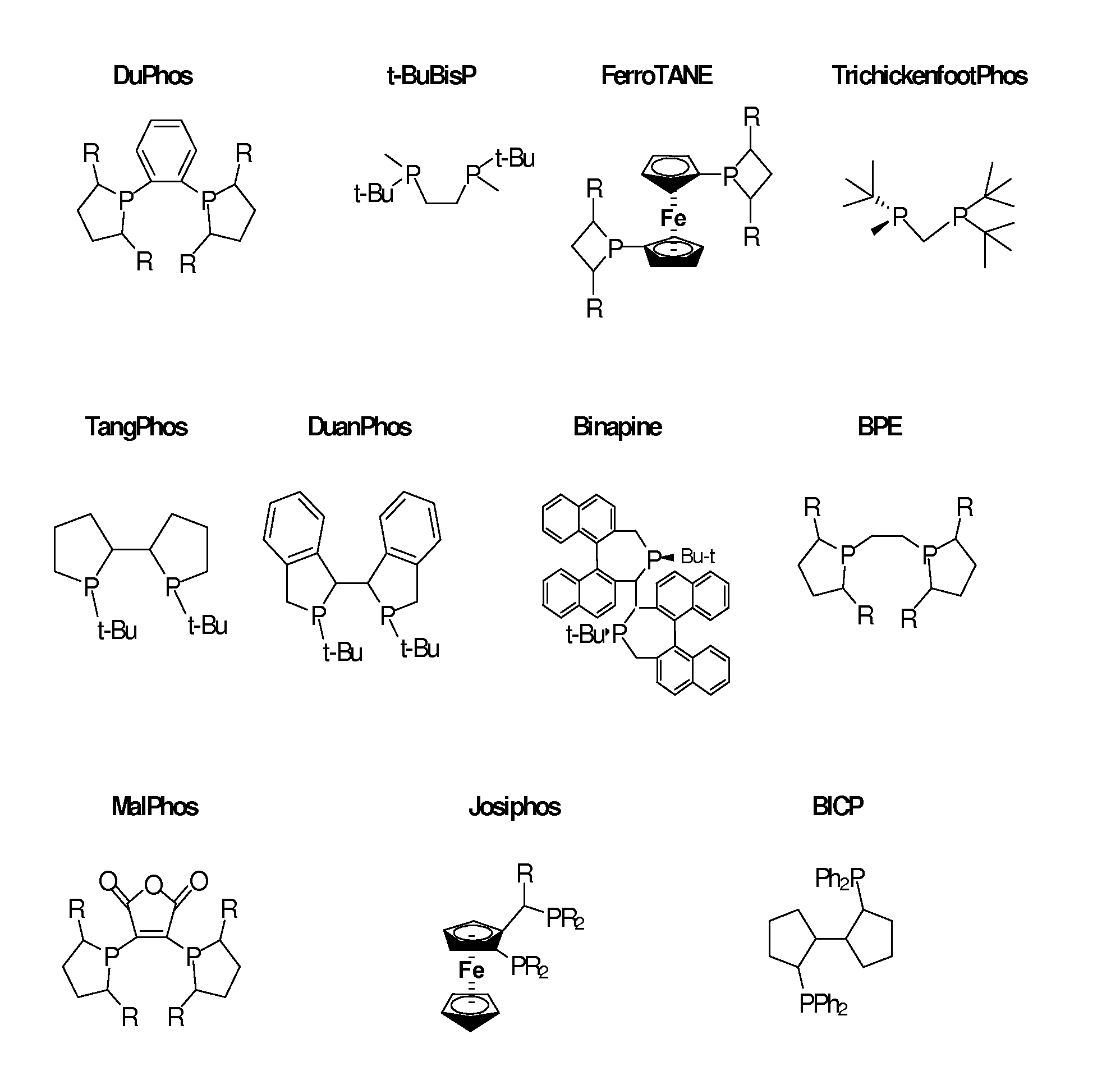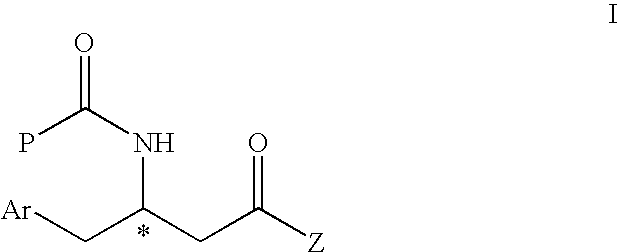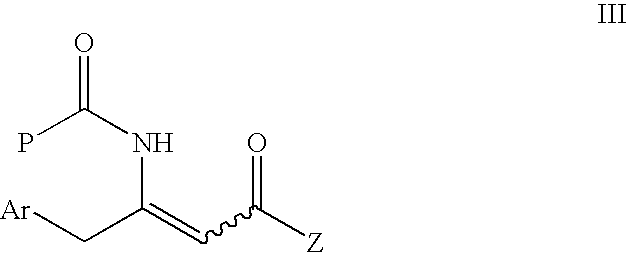Process and intermediates for the preparation of N-acylated-4-aryl beta-amino acid derivatives
a technology of acylated aryl betaamino acid and intermediates, which is applied in the preparation of carbamic acid derivatives, chemistry apparatus and processes, and organic chemistry, etc., can solve the problems of unpractical processes and inefficient processes
- Summary
- Abstract
- Description
- Claims
- Application Information
AI Technical Summary
Problems solved by technology
Method used
Image
Examples
example 1
Methyl 4-(2,4,5-trifluorophenyl)acetoacetate
[0071]
[0072]To a solution of 2,4,5-trifluorophenyl acetic acid (42.2 g, 222 mmol) in THF (400 mL) was added 1,1′-carbonyldiimidazole (39.5 g, 244 mmol) in portions at 0° C. The mixture was warmed to room temperature for 1 h, stirred at room temperature for another 1 h, and transferred to another flask containing 1.1 equivalent of methyl malonic acid magnesium salt. The stirring was continued for 24 h and quenched with 1N HCl. The mixture was extracted with dichloromethane and the organic phase was washed with saturated sodium bicarbonate, then brine, then dried over sodium sulfate, filtered and evaporated. The residue was crystallized from isopropanol / water to give 42.2 g (77.3%) of off-white solid. 1H NMR (300 MHz, CDCl3) 7.10-6.90 (m, 2H), 3.85 (s, 2H), 3.78 (s, 3H), 3.55 (s, 2H)
example 2
(Z)-methyl-3-amino-4-(2,4,5-trifluorophenyl)but-2-enoate
[0073]
[0074]A mixture of methyl 4-(2,4,5-trifluorophenyl)acetoacetate from Example 1 (25.0 g, 102 mmol) and ammonium acetate (38.5 g, 500 mmol) in methanol (250 ml) was stirred at reflux until the starting material totally disappeared (˜4 h). The whole reaction mixture was then concentrated, switched to dichloromethane and filtered. The filtration was washed with water, then brine, then dried over sodium sulfate, filtered and evaporated—ed. The residue oil solidified when hexane was added. The solid was collected by filtration and dried to give 22.4 g of the enamine product (89.6%). 1H NMR (300 MHz, CDCl3) 7.12-7.03 (m, 1H), 6.99-6.90 (m, 1H), 4.56 (s, 1H) 3.65 (s, 3H), 3.40 (s, 2H)
example 3
(Z)-Methyl-3-[N-(tert-butoxycarbonyl)amino]-4-(2,4,5-trifluorophenyl)but-2-enoate
[0075]
[0076]To a solution of (Z)-methyl-3-amino-4-(2,4,5-trifluorophenyl)but-2-enoate of Example 2 (1.95 g, 7.96 mmol) and DMAP (1.07 g, 8.76 mmol) in acetonitrile (20 mL) was added Boc anhydride (3.84 g, 17.6 mmol) in portions at 0° C. The reaction mixture was stirred at room temperature overnight, quenched with 1N HCl, and extracted with ethyl acetate (3×20 mL). The combined organic phase was washed with saturated sodium bicarbonate, then brine, then dried over sodium sulfate, filtered and evaporated. The oil residue was slurried with methanol to give a white solid (0.889 g, 32.4%). 1H NMR (300 MHz, CDCl3) 10.42 (s, 1H) 7.15-7.05 (m, 1H), 6.95-6.90 (m, 1H), 4.70 (s, 1H), 4.08 (s, 2H), 3.65 (s, 3H), 1.45 (s, 9H).
PUM
| Property | Measurement | Unit |
|---|---|---|
| temperature | aaaaa | aaaaa |
| enantiomeric excess | aaaaa | aaaaa |
| pressure | aaaaa | aaaaa |
Abstract
Description
Claims
Application Information
 Login to View More
Login to View More - R&D
- Intellectual Property
- Life Sciences
- Materials
- Tech Scout
- Unparalleled Data Quality
- Higher Quality Content
- 60% Fewer Hallucinations
Browse by: Latest US Patents, China's latest patents, Technical Efficacy Thesaurus, Application Domain, Technology Topic, Popular Technical Reports.
© 2025 PatSnap. All rights reserved.Legal|Privacy policy|Modern Slavery Act Transparency Statement|Sitemap|About US| Contact US: help@patsnap.com



